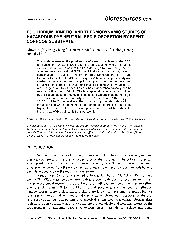摘要
This study focuses on the possible use of spent corncob substrate (SCS), an agricultural waste utilized after the cultivation of white rot fungus Pleurotus ostreatus, to adsorb the hazardous dye Neutral Red (NR) from aqueous solutions. Natural SCS was initially characterized by using a combination of Fourier Transform Infrared Spectrometry (FTIR) and Brunauer-Emmett-Teller (BET) techniques. A batch adsorption study was carried out with varied solution pH, adsorption time, temperature, and initial NR concentration. It was found that NR uptake was favorable over a pH range of 4.0 to 7.0, and the equilibrium adsorption capacity can be reached within about 180 min. The biosorption data were also calculated by the pseudo-second-order kinetic model and Langmuir isotherm model. The maximum adsorption capacity was 139.1, 140.0, and 143.3 mg g(-1) at 20, 30, and 40 degrees C, respectively. Thermodynamic parameters showed that the adsorption was a spontaneous and endothermic process. The study highlighted a new pathway to develop potential low-cost biosorbent for the removal of dye pollutants from wastewater.
